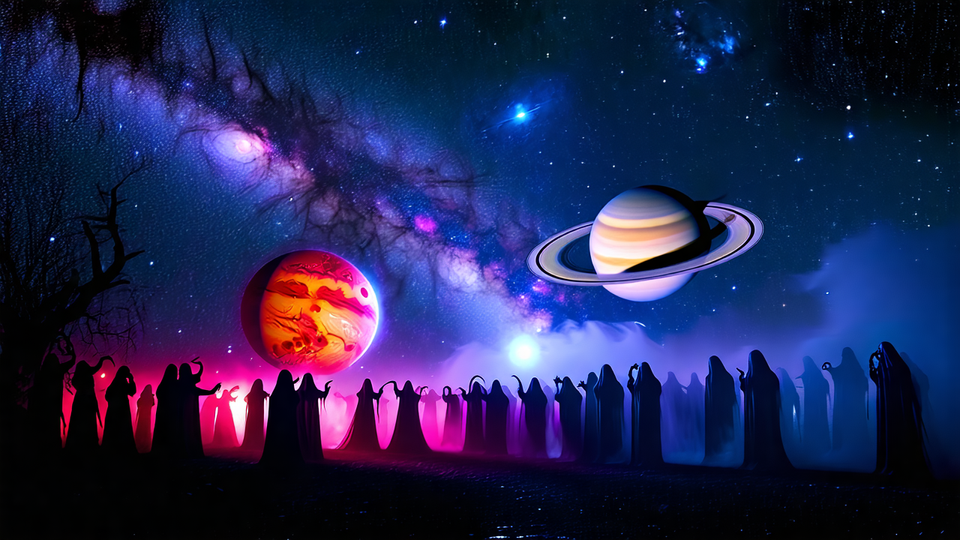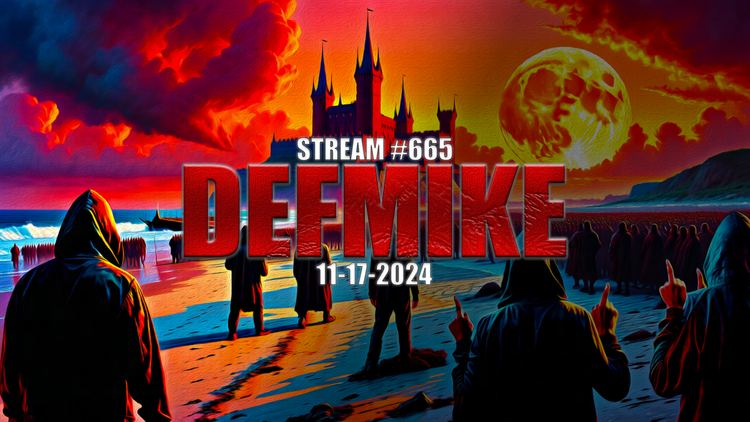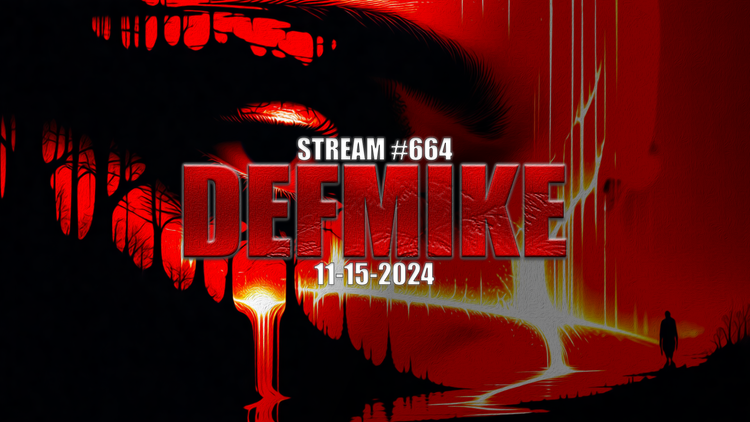The Wars: Planetary Alignments

Planetary alignments have captivated human imagination throughout history, with some cultures interpreting these celestial events as omens or predictors of significant earthly occurrences, including wars and power shifts.
Historical Significance of Alignments
Throughout history, various civilizations have attributed great importance to planetary alignments, meticulously observing and recording these celestial events. Ancient cultures such as the Chinese, Mayans, and Babylonians were particularly attentive to these cosmic occurrences. One notable example is the Babylonian astronomers' observation in 185 BC, when all five naked-eye planets - Mercury, Venus, Mars, Jupiter, and Saturn - were simultaneously visible in the eastern sky. These alignments often held profound cultural and sometimes political significance, influencing decision-making processes and shaping societal beliefs about the connection between celestial phenomena and earthly affairs.
Notable Planetary Alignments
One of the most significant planetary alignments in recorded history occurred in 1524, known as the "Planetary Portent of 1524." This event featured a close grouping of all five visible planets within 10.5° in the constellations Aquarius and Pisces, sparking widespread belief in impending world-changing events. Another remarkable alignment took place on May 5, 2000, when Mercury, Venus, Earth, Mars, Jupiter, and Saturn formed a rough line with the Sun. These rare celestial configurations have often captured public imagination and sparked discussions about their potential influence on earthly affairs, despite the lack of scientific evidence supporting such claims.
Astrological Interpretations
Throughout history, astrological interpretations of planetary alignments have played a significant role in shaping beliefs about their influence on earthly events. Some astrologers and cultures have viewed these celestial configurations as harbingers of major societal changes, including wars and shifts in power dynamics. A notable example is the prediction made by Professor Albert Porta in 1919, who claimed that a unique planetary alignment would create dangerous sunspots and cause worldwide disasters, even suggesting it could lead to the end of the world. While these interpretations have persisted in various forms, it's important to note that they lack scientific support and are based on cultural and historical beliefs rather than empirical evidence.
Scientific Perspective on Alignments
Modern astronomy does not support the notion that planetary alignments have any significant physical impact on Earth or human affairs. The gravitational and other effects of distant planets on our planet are minimal and are not amplified during alignments. Despite the historical and cultural significance attributed to these celestial events, scientific evidence does not indicate any causal relationship between planetary configurations and earthly occurrences such as wars or natural disasters. This scientific perspective stands in contrast to historical interpretations, highlighting the importance of distinguishing between cultural beliefs and empirical evidence when considering the impact of astronomical phenomena.
Wars and Planetary Alignments
It would be impossible to provide a comprehensive breakdown of every war in human history along with zodiac correlations, as many conflicts lack precise start dates or occurred before systematic astrological record-keeping. However, I can highlight some notable wars and their astrological contexts, while emphasizing that these correlations are based on astrological interpretations rather than scientific evidence.
Peloponnesian War (431-404 BCE):
Jupiter and Saturn were in conjunction in Taurus at the outbreak. In astrology, this alignment is often associated with major societal shifts and conflicts over resources (Taurus ruling material wealth). The conjunction of these two slow-moving planets was seen as a portent of a long-lasting struggle.
Punic Wars (264-146 BCE):
While exact planetary positions are unclear, the period saw several Jupiter-Saturn conjunctions. These recurring alignments were interpreted as cycles of conflict and empire-building, fitting the century-long struggle between Rome and Carthage.
Roman Civil Wars (49-45 BCE):
Mars was in Scorpio when Caesar crossed the Rubicon, initiating the war. Mars in Scorpio is considered a powerful placement, associated with intense conflict and transformative struggles for power.
Fall of Western Roman Empire (476 CE):
Saturn was in Scorpio, opposing Jupiter in Taurus. This opposition was seen as a clash between established order (Saturn) and expansion/new beliefs (Jupiter), mirroring the conflict between Rome and invading forces.
Crusades (1095-1291):
The First Crusade was called when Jupiter and Saturn were conjunct in Pisces. This watery sign connection was interpreted as a spiritual/religious motivation for conflict, fitting the Crusades' nature.
Hundred Years' War (1337-1453):
Began with a Jupiter-Saturn conjunction in Scorpio, seen as an omen of prolonged, transformative conflict. The war's end coincided with a lunar eclipse in Scorpio, interpreted as marking the conclusion of this long struggle.
US Wars and Zodiac
The United States has been involved in numerous wars throughout its history, and astrologers have noted various celestial alignments during these conflicts. While it's important to emphasize that there is no scientific evidence supporting astrological influences on wars, here's a detailed report on the zodiac correlations with major U.S. conflicts:
American Revolutionary War (1775-1783):
When the war began, Uranus was in Gemini, which astrologers associate with communication and new ideas. This alignment was seen as symbolic of the revolutionary ideals and the spread of new political concepts. Pluto was in Capricorn, suggesting a transformation of established power structures.
War of 1812 (1812-1815):
Neptune was in Sagittarius during this conflict, which astrologers interpret as representing idealism and expansion. This was seen as reflective of the young nation's aspirations and desire to assert itself on the world stage.
Mexican-American War (1846-1848):
Uranus was in Aries during this war, a placement associated with aggression and initiative. Astrologers have suggested this alignment corresponded with the U.S. drive for territorial expansion.
American Civil War (1861-1865):
A significant Saturn-Neptune conjunction in Aries occurred at the start of the war. In astrological terms, this was interpreted as a clash between structure (Saturn) and idealism (Neptune), mirroring the conflict between established systems and new social ideals.
Spanish-American War (1898):
Uranus was in Sagittarius, which astrologers associate with foreign affairs and expansion. This was seen as symbolic of the U.S. extending its influence beyond its borders.
World War I (1917-1918 for U.S. involvement):
Neptune was in Leo, which some astrologers interpreted as representing idealistic leadership. The U.S. entered the war with high moral aspirations, fitting this astrological narrative.
World War II (1941-1945 for U.S. involvement):
When the U.S. entered the war, Uranus was in Taurus, suggesting upheaval in material resources and values. Jupiter and Saturn were conjunct in Taurus, which astrologers saw as indicative of a major shift in global power structures.
Korean War (1950-1953):
Uranus was in Cancer during this conflict, which astrologers associate with home and security. This was interpreted as reflecting the U.S. concern with defending its allies and containing communism.
Vietnam War (1955-1975):
This long conflict saw multiple planetary shifts. Notably, Uranus moved from Leo to Libra, which astrologers saw as a shift from individual expression to a focus on relationships and balance. This was linked to the changing public perception of the war over time.
Gulf War (1990-1991):
Uranus and Neptune were conjunct in Capricorn, which astrologers interpreted as a clash between innovation and idealism within established power structures. This was seen as symbolic of the U.S. asserting its role in the post-Cold War world order.
Iraq War (2003-2011):
When the war began, Uranus was entering Pisces, which astrologers associate with illusion and sacrifice. This was linked to the controversial nature of the war's justification and its unforeseen consequences.
Celestial Influences Explained
In astrology, each celestial body is believed to influence different aspects of human life and personality. Here's a breakdown of the major planets and their astrological significance:
- Sun: Represents core identity, ego, and life purpose. Its position at birth is thought to shape one's basic personality and self-expression.
- Moon: Associated with emotions, instincts, and the subconscious. It's believed to influence mood fluctuations and emotional responses.
- Mercury: Governs communication, intellect, and reasoning. Its placement is said to affect how one thinks and expresses ideas.
- Venus: Rules love, beauty, and values. It's thought to influence romantic relationships and aesthetic preferences.
- Mars: Represents energy, action, and desire. Its position is believed to affect how one asserts themselves and pursues goals.
- Jupiter: Associated with expansion, growth, and philosophy. It's thought to bring opportunities and shape one's beliefs.
- Saturn: Represents structure, discipline, and responsibility. Its placement is believed to indicate areas of life where one faces challenges and learns important lessons.
- Uranus: Associated with innovation, rebellion, and sudden changes. It's thought to bring unexpected developments and breakthroughs.
- Neptune: Rules spirituality, imagination, and illusion. Its influence is believed to affect dreams, intuition, and artistic expression.
- Pluto: Represents transformation, power, and regeneration. It's associated with profound life changes and deep psychological processes.
The positions of these planets in relation to each other (aspects) and within zodiac signs are interpreted to create a complex picture of personality traits and life events. However, it's important to note that while many people find meaning in astrology, there is no scientific evidence supporting its ability to predict events or influence human behavior.
Zodiac Signs Explained
The zodiac consists of 12 signs, each associated with specific dates, elements, and personality traits:
- Aries (March 21 - April 19): A fire sign ruled by Mars, Aries is known for being energetic, courageous, and impulsive.
- Taurus (April 20 - May 20): An earth sign ruled by Venus, Taurus is characterized by reliability, patience, and stubbornness.
- Gemini (May 21 - June 20): An air sign ruled by Mercury, Gemini is adaptable, curious, and communicative.
- Cancer (June 21 - July 22): A water sign ruled by the Moon, Cancer is compassionate, intuitive, and protective.
- Leo (July 23 - August 22): A fire sign ruled by the Sun, Leo is confident, charismatic, and sometimes self-centered.
- Virgo (August 23 - September 22): An earth sign ruled by Mercury, Virgo is analytical, hardworking, and detail-oriented.
- Libra (September 23 - October 22): An air sign ruled by Venus, Libra is diplomatic, charming, and fair-minded.
- Scorpio (October 23 - November 21): A water sign traditionally ruled by Mars (modern: Pluto), Scorpio is passionate, resourceful, and intense.
- Sagittarius (November 22 - December 21): A fire sign ruled by Jupiter, Sagittarius is optimistic, adventurous, and philosophical.
- Capricorn (December 22 - January 19): An earth sign ruled by Saturn, Capricorn is disciplined, ambitious, and practical.
- Aquarius (January 20 - February 18): An air sign traditionally ruled by Saturn (modern: Uranus), Aquarius is innovative, independent, and humanitarian.
- Pisces (February 19 - March 20): A water sign traditionally ruled by Jupiter (modern: Neptune), Pisces is empathetic, artistic, and intuitive.
These signs are further categorized into four elements (fire, earth, air, water) and three qualities (cardinal, fixed, mutable), which are believed to influence their characteristics and interactions. It's important to note that while astrology remains popular, there is no scientific evidence supporting its ability to predict personality traits or life events.
Zodiac Elements and Qualities
The zodiac signs are categorized into three qualities (also called modalities) and four elements, which provide additional layers of meaning and characteristics to each sign.
The three qualities are:
- Cardinal: Aries, Cancer, Libra, and Capricorn. These signs initiate action and are natural leaders. They start each season and bring fresh energy and enthusiasm.
- Fixed: Taurus, Leo, Scorpio, and Aquarius. These signs maintain and stabilize. They occur in the middle of each season and are known for their determination and persistence.
- Mutable: Gemini, Virgo, Sagittarius, and Pisces. These signs adapt and change. They come at the end of each season and are flexible and versatile.
The four elements are:
- Fire: Aries, Leo, and Sagittarius. Fire signs are passionate, dynamic, and temperamental. They're enthusiastic and courageous.
- Earth: Taurus, Virgo, and Capricorn. Earth signs are practical, grounded, and stable. They're known for their reliability and patience.
- Air: Gemini, Libra, and Aquarius. Air signs are intellectual, communicative, and social. They're analytical and enjoy philosophical discussions.
- Water: Cancer, Scorpio, and Pisces. Water signs are emotional, intuitive, and deeply feeling. They're empathetic and nurturing.
These categories work together to create the unique characteristics of each zodiac sign. For example, Aries is both a cardinal sign and a fire sign, making it a natural initiator with passionate energy.





Member discussion